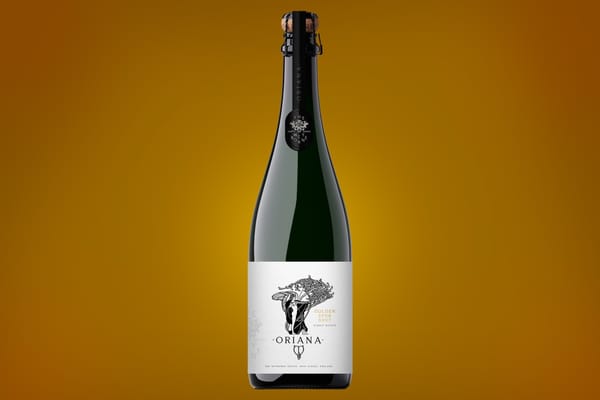Chile

Chile has emerged as one of the world’s most exciting and consistent wine-producing countries. With its unique geography, diverse climates, and rich winemaking history, Chile offers a broad spectrum of wines that range from budget-friendly to ultra-premium. Known for its quality and diversity, Chilean wine has gained a reputation for blending tradition with innovation, making it a favorite among both casual drinkers and serious wine aficionados.
A History of Winemaking in Chile
Chilean Wine dates back to the 16th century when Spanish settlers brought vines to the region. Early production centered around simple table wines, but the industry began to evolve in the 19th century when French grape varieties were introduced. The arrival of these varieties, including Cabernet Sauvignon, Merlot, and Carménère, helped raise the profile of Chilean wine. Interestingly, while Europe suffered from the phylloxera epidemic in the late 19th century, Chile's isolation and natural barriers—like the Andes Mountains and the Atacama Desert—protected its vineyards, allowing the country to cultivate some of the purest vines in the world.
Major Wine Regions
Chile’s geography plays a key role in its winemaking success. The country is flanked by the Pacific Ocean to the west and the Andes Mountains to the east, creating a diverse range of microclimates ideal for viticulture. Chile’s wine regions are spread across the country, from the northern desert regions to the cooler southern zones.
Maipo Valley is arguably Chile’s most famous wine region and is often referred to as the country’s "Bordeaux." Located just south of Santiago, it’s renowned for its exceptional **Cabernet Sauvignon**. The valley produces rich, full-bodied wines with flavors of black fruit, chocolate, and mint.
Colchagua Valley, located to the south of Maipo, is known for its red wines, particularly
Carménère, Syrah, and Malbec. The region enjoys a Mediterranean climate, which is ideal for producing bold, ripe reds with soft tannins and deep color.
Aconcagua Valley is one of the warmest regions in Chile and is famous for Cabernet Sauvignon and Syrah, which produce wines with intense concentration and structure. The coastal parts of Aconcagua, such as Casablanca Valley, are cooler and more suited to white varietals like Chardonnay and Sauvignon Blanc.
Casablanca Valley is a cooler, coastal region that has gained international recognition for its Chardonnay and Sauvignon Blanc The cool Pacific breezes create the perfect conditions for crisp, aromatic whites with fresh acidity.
Limarí Valley, located in the far north of the country, benefits from a unique climate that combines desert-like conditions with cooling coastal breezes. The valley is gaining recognition for its fresh, minerally Chardonnay and elegant Syrah.
Itata Valley and Bio-Bio Valley, located further south, are two of Chile’s oldest wine regions and have seen a resurgence in recent years. These cooler regions are now producing exciting Pinot Noir, Riesling, and Muscat wines.
Key Grape Varieties
Chile is best known for its **Cabernet Sauvignon**, which thrives in regions like Maipo Valley and Colchagua Valley. Chilean Cabernet Sauvignon is often characterized by its ripe fruit flavors, firm tannins, and herbal undertones, offering both power and balance.
Carménère, once mistaken for Merlot, has become Chile’s signature grape. Originally from Bordeaux, this grape was thought to have been lost to the phylloxera plague, but it was rediscovered in Chile in the 1990s. Carménère produces smooth, medium-bodied wines with notes of black fruit, spice, and a distinctive herbaceous character.
Sauvignon Blanc and Chardonnay are the stars among Chile’s white wines, particularly from cool-climate regions like Casablanca and Limarí. Chilean Sauvignon Blanc is typically vibrant and fresh, with flavors of citrus, green apple, and herbs, while the country’s Chardonnay ranges from lean and mineral-driven to fuller, oak-aged styles.
Other notable varieties include Syrah, which produces rich, peppery reds, and **Pinot Noir**, which is gaining a strong reputation in cooler regions like Casablanca and Bio-Bio for its elegance and complexity.
Innovation and Sustainability
In recent years, Chile has become a leader in sustainable winemaking. The country’s natural geography provides a head start, with vineyards protected by the ocean, mountains, and desert. However, winemakers have embraced modern, eco-friendly practices such as organic farming, water conservation, and biodiversity preservation. The country's Sustainable Winegrowing Code, launched in 2011, has formalized these efforts, with many wineries now certified for their environmental stewardship.
Chile is also known for its innovation in the vineyard and the winery. Winemakers are experimenting with lesser-known grape varieties, such as País and Carignan, as well as reviving old vines in regions like Maule and Itata. Additionally, there is a growing interest in biodynamic viticulture, as well as natural and low-intervention wines, reflecting the global trend toward more sustainable and artisanal wine production.
International Recognition
Chilean wines have long been celebrated for offering excellent quality at affordable prices. However, in recent decades, the country has also become known for its premium wines. Labels like **Seña**, **Almaviva**, and **Clos Apalta** have helped to cement Chile’s reputation as a producer of world-class wines that can compete with the best from Europe and the United States.
Chile’s export market has flourished, with the country sending wines to over 150 countries. The United States, the United Kingdom, and China are among its largest markets, where Chilean wines are appreciated for their balance, affordability, and increasingly, their diversity and quality.




